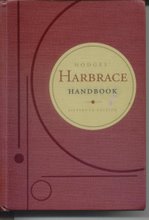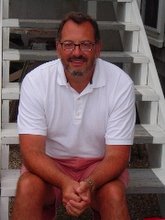Below is my transcription of a letter dated Oct. 25, 1901, from
Hanover, New Hampshire.
I found it in one
of the many boxes of letters to and from my great grandmother Charlotte “Lottie”
Cheever Tucker (1887-1944) that I have in my basement.
The letter describes the elaborate celebrations surrounding the
200th anniversary of the founding of Yale University, which took place
0ct. 20–23, 1901. Lottie's account includes her husband, Dartmouth President William Jewett Tucker, meeting the new president,
Theodore Roosevelt. Interestingly, among
many other notables, Booker T. Washington took part in the celebrations.
Probably Great Grandma Lottie was writing to her “Round
Robin” of sisters and friends, who would circulate by mail a binder with the
latest updates from each one of them, replacing their last letter with their
new one and dropping the binder in the mail to the next recipient.
Lottie’s younger sisters were Ellen Cheever Rockwood (seated at right),
Elizabeth Cheever Wheeler (standing), and Louisa Cheever (seated at left), who in 1900 had begun her long
career teaching English professor at Smith College. They are pictured below with their Auntie Elizabeth Cheever Washburn in 1886.
Here is my transcription (with some words I can’t make out):
My dear girls,
Safely returned
from out outing that was really most enjoyable though very fatiguing. It gave
me an additional pang to find that Betty [Elizabeth Cheever Washburn
Tucker, my grandmother, would have been 12] had had a crying spell of
homesickness for her Mamma, but otherwise things seem to have gone on well
without me. Margaret McHugh’s trunk has
come and she seems to be settling into her work pretty well. I do not like her as well Mary, and she is
not as neat: but I believe she will prove a better cook. I trust that Elizabeth
[Cheever Wheeler] is well supplied by this time. It seems to me
that I am very fortunate to have the change made with so little trouble or
delay.
The “Yale luck”,
as the Harvard men would say, followed them as to ______ {Wrarten?]. Nothing
could have been more propitious. Shortly after our arrival Monday night we were
taken by the Mungers to a house on Hillhouse Ave. Which proved to be that of
the sisters of Dr. Terry Englewood, who with his wife and daughters was our
host for the celebration. They both
wished to be particularly remembered to Ellen and spoke warmly of her and
Auntie [Elizabeth Cheever Washburn, widow of Worcester
industrialist/philanthropist Ichabod Washburn (1798-1868)]. It was my pleasure to meet them. There was quite a company of friends and
neighbors to view the Torchlight parade, and M afterwards were served with
bouillon & rolls, and ice cream + cake. The parade was a monstrous affair
and very picturesque. All over the Univ. buildings, on the campus, and whenever
it was wished to show allegiance to Yale, then more lines of Chinese lanterns,
imported for the first time into this country from Paris. They were
pumpkin-shaped and pumpkin-colored and were very effective. The whole town was
as light as day and a blaze of color and sound. Beginning with the Harrises +
Corps (?) whom we met on the street that night, we saw almost everybody we knew
and met many others. The English guests
= the Messia (?) of Mansfield College, Oxford, were interesting, companionable
people and I never tired of hearing her bold inflections and queerly-managed
mouthings of familiar words. Dr. White,
the Ambassador, was my left-hand neighbor at table (I sat on Dr. Munger’s left)
and he is a very charming man. Mr.
Hitchcock + Chandler, the two brothers-in-law of Mrs. Munger came and went at
different meals, and the two children - Miss Rose – the invalid and Thornton, a
Freshman – made the company at table- and it was exceedingly pleasant. Tuesday A.M. we had good seats in the gallery
of Battell Chapel, and saw the long procession of delegates and notables come
in with all their “millinery” on. It was
a great show. But the speaking did not
come up to it, and the exercises were so long that in came one before the
end. I heard Parker’s “Hora Novissima” well-rendered,
with a true (?) quartets of soloists, in the afternoon, and in the evening
braved the tremendous crowd and more seats in the universe amphitheatre on the
campus. I never saw so many people together,
but that was all I could see; For the women,—who had been admitted only on
sufferance, at the last moment—stood up on the benches and in the aisles so
that a good quarter of the alumni & guests could neither get their seats,
nor having gotten them, see the stage. And this in spite of the maddening
shouts of the young alumni, “down in front,” “ladies, please sit down” “ladies
under 40, please sir down, all others rise.”
I blushed for my sex. The singing
of College songs, led by the band and a chorus, and taken up by all the 6000 or
7000 alumni was memorable, and the glimpses we had of the talk____ were enough
to show how well-conceived and well-carried out they were. The next morning, the Presidents’ arrival brought
together a crowd of people that was absolutely terrifying. We made three
attempts to get into the theatre when the degrees were conferred, but by the
time we had reached the entrance the seats had been taken up, and along with
hundreds of the alumni, entitled to fit in by virtue of their badges, we had to
wait nearly an hour in order to get home again, without even a glimpse of the
discussion. It was very disappointing,
and all the more so when the men came home and told us of the enthusiasm at
fining (?) the defrus (?). But President
Roosevelt was entertained at a house only a few doors above the Mungers and we
saw him driving by two or three times, and again at the reception in the new
dining hall -- Prof. Ladd, next door, entertained Ed Marquis Ito (?) and we saw
him several times also. The President is
not as good looking as his picture and William, who was invited to meet him at
Mr. Farnum’s in the morning, says he talks too much and is undignified. I watched the receiving party at the
afternoon reception and was glad that they did not shake hands. The crowd was so great there also that we did
not attempt to get in line and greet the two presidents, but stayed on the
outskirts, meeting various people and watching the interesting crowd- Pres. Seelye,
ex-Pres. Carter, Pres. Buckham, Eliot, Murkland, Booker Washington, the Chief
Justice, Philip Moen, Edward Everett Hale are some of those I met. Sec. Hay, Dekess (?), Choate sat behind us on
the Campers, and one could not stir (?) miture (?) encountering some
distinguished person. Mr. Frisail’s (?)
degree was received with much applause and he was greatly pleased. He called Wednesday evening while we were
sitting on the piazza, watching the select coming and going from the Farnums’. At 5 that afternoon the thermometer was 74˚! And
the next day, on our return to Hanover there was sun (?). We called on the Dwights Thursday A.M. and
there met the Steadmans- not very distinguished in appearance or
conversation. And in spite of the
_asturiss (?) of the whole celebration and the crowds of dignitaries which it
brought together, I think the general impression was not of such distinction
as ours. The speaking here was of a much
higher order, and some of the Yale men of this faculty thought the conferring
of degrees were much more impressive. We
got ahead of Yale in honoring Sec. Hay and our Ruisman – shall be amused to see
how Collin gets out of his sweeping statement on the pulpit. He thought we were doing it on too great a
scale and that it distracted from the dignity of the degree to give it to more
than 3 or 4 men – “Yale + Harvard never do.”
And here there were 50 or more who were so honored at his own alma
mater.
Helen Pitman [who
eventually arranged a meeting on a cruise between my grandmother and Frank
Cushwa, who was then teaching at Choate] and the Choate School boys
sent an urgent request to stop there, and I planned to take lunch with her on
Tues. Will could not leave, and when I
got to New H. I found it would not do to try to get away. I wish I might stop there and at Worcester on
my return. But at this distance it seems
unwise. Maggie is staying here 5 nights
and begins work with us Monday. My
present plan is to join Will [Lottie’s husband, Dartmouth President
William Jewett Tucker], at Hartford the evening of the 8th. Perhaps you might send this to Louisa [Cheever,
teaching English at Smith]? I
rather hope she will spend the 3rd with us, when Lyman Abbott [theologian,
Congregational minister, pictured below] is to be here.
Mrs. Dr. Smith went to her H. w. the Dr. and had one of her ill
times. She asked for Ellen [Cheever
Rockwood] w. interest. With all
dear love to you all, Charlotte















